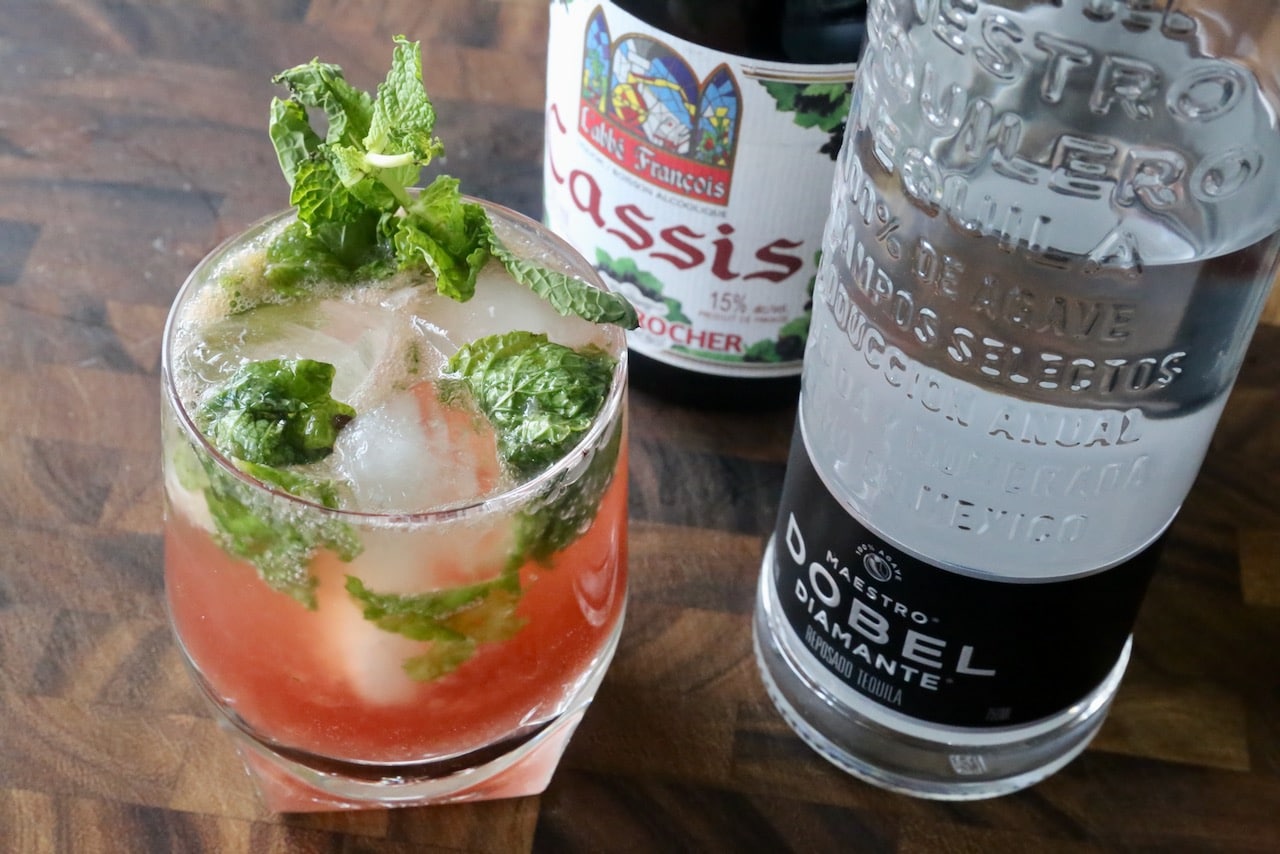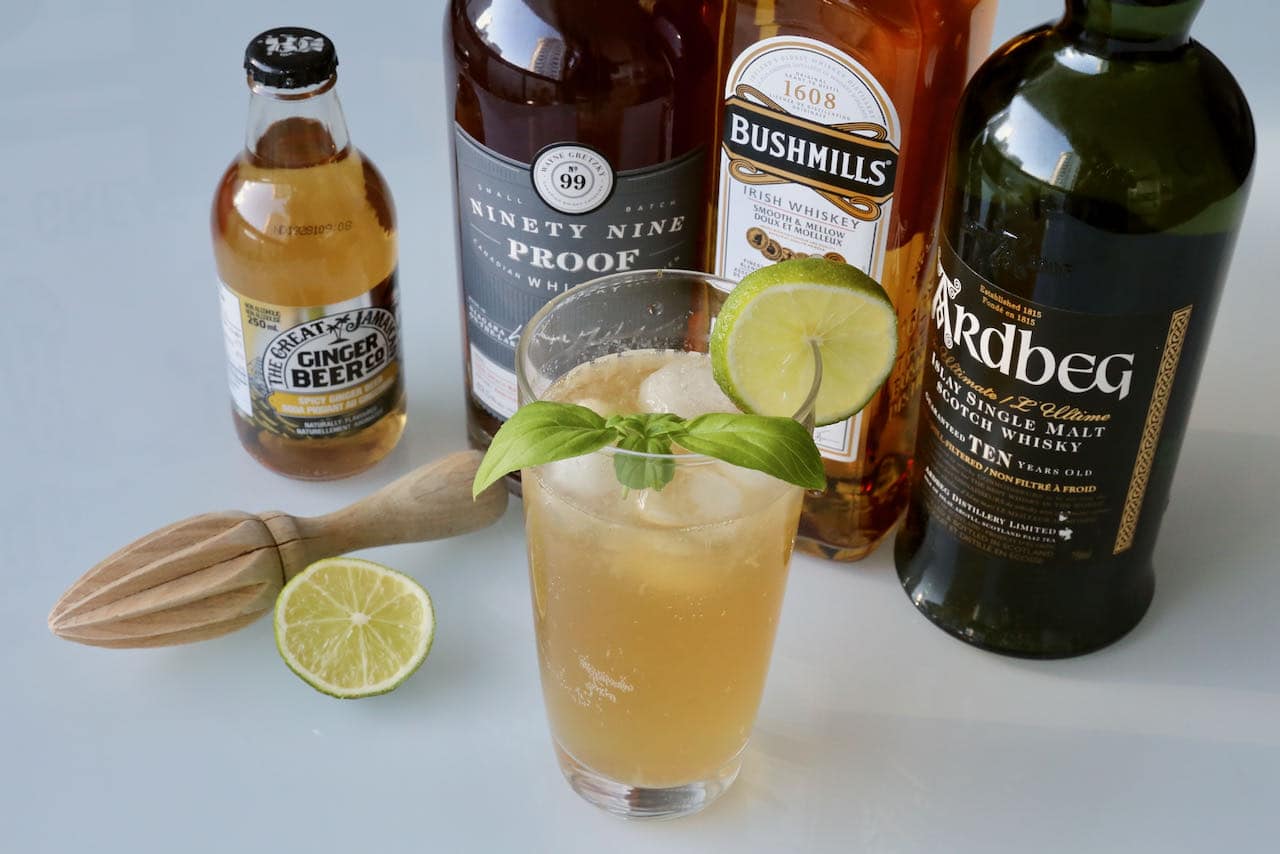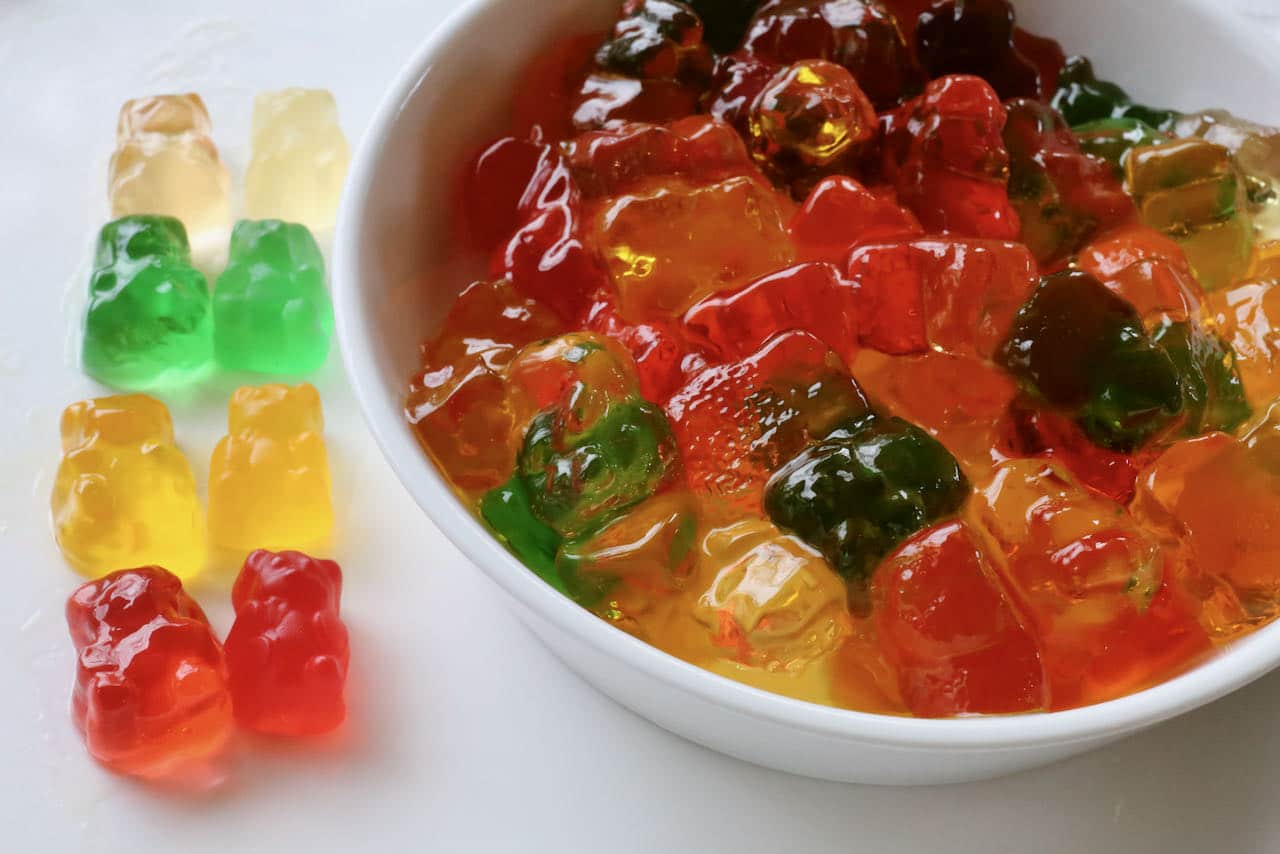Looking for the best homemade Thai Red Prawn Curry recipe?
We’ve traveled extensively through Thailand and eaten at all of the best Thai restaurants in Toronto. We’ve taken Thai cooking classes in Chang Mai and learned expert cooking techniques courtesy of the executive chef at JW Marriott Phuket Resort.
Cooking Thai food at home is quick and easy. Our flavourful Barbecued Thai Red Prawn Curry recipe takes just under 2 hours to prepare and keeps in the fridge for several days. You’ll love loitering over these delicious creamy and spicy Thai Prawn Curry leftovers!
Save this story to Pinterest!

Indian vs Thai Curry
The two countries that are most associated with curry are India and Thailand. Each nation prepares curry in a unique way. In general, the term refers to a savoury meat, seafood or vegetable dish cooked in a sauce that is accompanied by rice, flatbread or fresh salads.
In India, curry (or masala) encompasses a variety of dishes that use a complex combination of spices or herbs, usually including ground turmeric, cumin, coriander, ginger, and fresh or dried chilies. You’ll find unique regional takes on the Indian curry concept in neighbouring countries such as Pakistan, Bhutan, Bangladesh, Nepal, Sri Lanka and The Maldives.
Indian curries generally do not feature beef, as the cow is considered a sacred animal. The only region in India you are likely to find beef on a menu is in Kerala, which was colonized by the Portuguese and later by the Dutch. You can enjoy beef dishes in the colonial city of Cochin as well as luxury resorts like Coconut Lagoon.
Some of our favourite Indian recipes include Chicken Korma, Vegetarian Shahi Paneer and Indian Crepes.
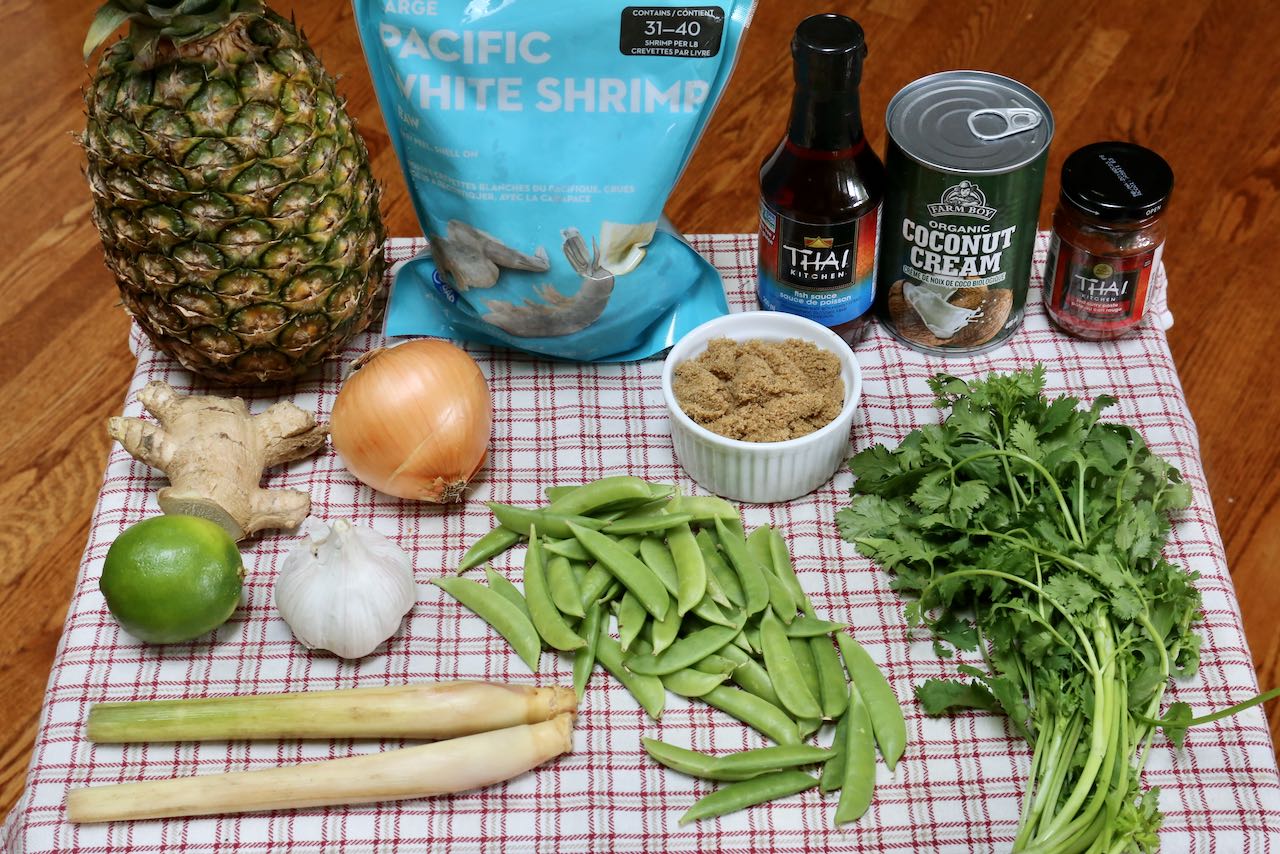
Types of Thai Curry
In Thailand, curry refers both to dishes in Thai cuisine that are made with various types of curry paste and to the pastes themselves. A Thai curry dish is made from curry paste, coconut milk, meat, seafood, vegetables and herbs.
You’ll find unique regional takes on the Thai curry concept in neighbouring countries such as Myanmar, Laos, Malaysia, Singapore, Indonesia, Cambodia and Vietnam.
Popular Thai curries include Green, Red, Yellow, Penang and Masaman. Most Thai curries are categorized by the colour of the curry paste. The colour of the chilies and other ingredients gives each curry its distinct hue. Traditionally, all Thai curries were made with the same ingredients except for one thing: the chilies. Usually green curry is the mildest, red is the hottest and yellow falls somewhere in between.
Masaman Curry uniquely influenced Thai cooking thanks to visiting Persian traders. Masaman is a broken translation for Muslim. It originated in the south of Thailand near the border of Malaysia and is a thick sauce with a mild, slightly sweet flavour. Massaman curry dishes distinguish themselves by the inclusion of several whole spices and peanuts.
Penang Curry is sweeter than its sister, spicy Thai Red Curry. It is named for the island of Penang off the west coast of Malaysia and is served sometimes topped with coconut cream.
Most Thai curry paste recipes are made with spicy chilies, garlic, ginger, galangal, lemongrass, shallot, fish sauce, shrimp paste, cane sugar, lime, spices and coconut milk.
The major components of our Thai Prawn Curry are red curry paste, coconut milk, snap peas and barbecued prawns and pineapple.

Prawn vs Shrimp
So what is the difference between prawn and shrimp?
In Britain, Australia and New Zealand locals usually cook large prawns, while in America and Canada they’re smaller and more commonly known as shrimp.
But it’s not just a question of size. Shrimp aren’t just prawns in miniature. So what’s the deal with the world’s favourite crustacean cousins?
Shrimp possess lamellar, plate-like gills and a set of claws on their front two pairs of legs. Prawns, in comparison, have branching gills, and claws on three sets of their legs, with the front pair being noticeably larger. One nuanced visual indicator setting shrimp apart is the distinct three segments of their bodies, with the middle segment overlapping the front and rear portion. Prawns, lacking such body segmentation, have straighter bodies than shrimp.
Shrimp live exclusively in salty marine water, where they transport themselves by swimming. Prawns, on the other hand, spend their lives crawling along the floors of fresh or brackish waters. The differing habitats place each animal into completely different food chains.
Feel free to use shrimp or prawns in this Thai Red Curry recipe. We suggest purchasing the largest prawns you can as they cook best on the barbecue and you don’t have to worry about them slipping between the grill.
If you’re only able to find small shrimp at your local grocery store we suggest sautéing them in a pan over the stove.

Sourcing Sustainable Seafood
Over the last few years there has been an important conversation taking place about ethical and sustainable fishing practices for prawn and shrimp.
The Associated Press won the 2016 Pulitzer Prize for Public Service for its shocking investigation Seafood From Slaves. The article exposes the modern day slave trade taking place in Southeast Asia’s booming shrimp and prawn fishing industry.
Chef Charlotte Langley is the Co-Founder and Chief Culinary Officer at Scout Canning in Toronto, a sustainable canned seafood producer. She’s also the Chef Ambassador in Canada for The Marine Stewardship Council.
If you’re looking to purchase seafood Langley says, “There are two things you can do. Look for the ASC logo on the product you’re buying or speak to your local fishmonger about the seasonality of what you are buying and where it comes from.”
Canadians don’t have to purchase cheap seafood caught half way across the world. Did you know Ontario has its very own sustainable seafood operation? Check out Planet Shrimp, located in Aylmer!

Thai Red Prawn Curry Cooking Tips
If it’s your first time making a Thai Red Prawn Curry here are a few cooking tips and substitutions you can use in the kitchen. If you’re planning to make a Thai Prawn Curry feast and have time to plan in advance, you can easily break up the recipe process to give yourself more time the day of your dinner.
While we think the best Thai Red Prawn Curry is cooked on the barbecue, you can easily prepare the pineapple and seafood in a skillet. You’ll lose the smokey flavour and charred texture but we realize not everyone has a barbecue in their backyard.
If you are using a barbecue we suggest purchasing prawns that have the shell and tail attached. The barbecue flames will char the exterior, imparting a smokey flavour, while keeping the fleshy interior tender and juicy.
You can remove the prawn tails and shells before adding them to the curry sauce. We like to leave the shells on as they offer a striking presentation at the table for your dinner guests. It’s also fun to pull up your sleeves and eat with your hands.
We’ve used a popular store bought paste but if you’re adventurous and have access to the ingredients we’d suggest making homemade Red Thai Curry Paste.
Our recipe calls for brown sugar but in Thailand you’d typically use palm sugar, which has its own unique taste. We’ve used brown sugar as its molasses content mimics palm sugar and is most readily available in North American grocery stores. If you have palm sugar, use it!
We’ve used crunchy snap peas in this recipe but if you don’t have access to them in season you could substitute for green beans or long beans.
If you love spicy food feel free to add thinly sliced Thai red chili peppers or a few shakes from your favourite hot sauce.
If you have a vegan or vegetarian guest joining you for dinner you might want to share the recipe in advance so they can review the ingredients. You can easily separate some of the curry sauce and add grilled tofu or paneer instead of prawns. You can also substitute fish sauce with a homemade vegan fish sauce.

Homemade Thai Red Curry Paste
Feel free to use your favourite store bought Thai curry paste at the grocery store or prepare from scratch in your kitchen. Use a mortar and pestle to grind all the ingredients together until you’ve created a smooth and fragrant mixture. This homemade Thai red curry paste recipe yields 4-5 tablespoons.
- 1 tbsp coriander seeds, roasted until brown
- 2 cardamom pods, roasted until brown
- 1/2 tsp black peppercorns
- 1/2 tsp salt
- 10, large red dried chillies (seeds removed soaked in water for 10 minutes then finely chopped)
- 1 tsp galangal, skin removed and chopped
- 2 tsp lemongrass, chopped
- 1 tsp kaffir lime peel, chopped
- 1 tbsp coriander root, chopped
- 3 tbsp shallots, chopped
- 3 tbsp garlic, crushed
- 1 tsp shrimp paste
- 10, Thai red chillies

What To Serve With Thai Red Prawn Curry
If you’re planning a Thai themed dinner, our Red Prawn Curry offers a flavourful and rich main dish.
We suggest serving the curry in a large bowl at the table so guests can spoon their desired portion onto their plate, family-style. Garnish the top of the curry with a lime wedge, bean sprouts and chopped cilantro.
Popular side dishes for creamy Thai coconut curry include Green Onion Cakes, Egg Rolls served with chili sauce, juicy mango or papaya salad, grilled satay skewers, shrimp chips, DIY lettuce wraps and coconut rice.
If you have meat lovers in the family we suggest cooking our popular Thai Beef & Pumpkin Coconut Curry.
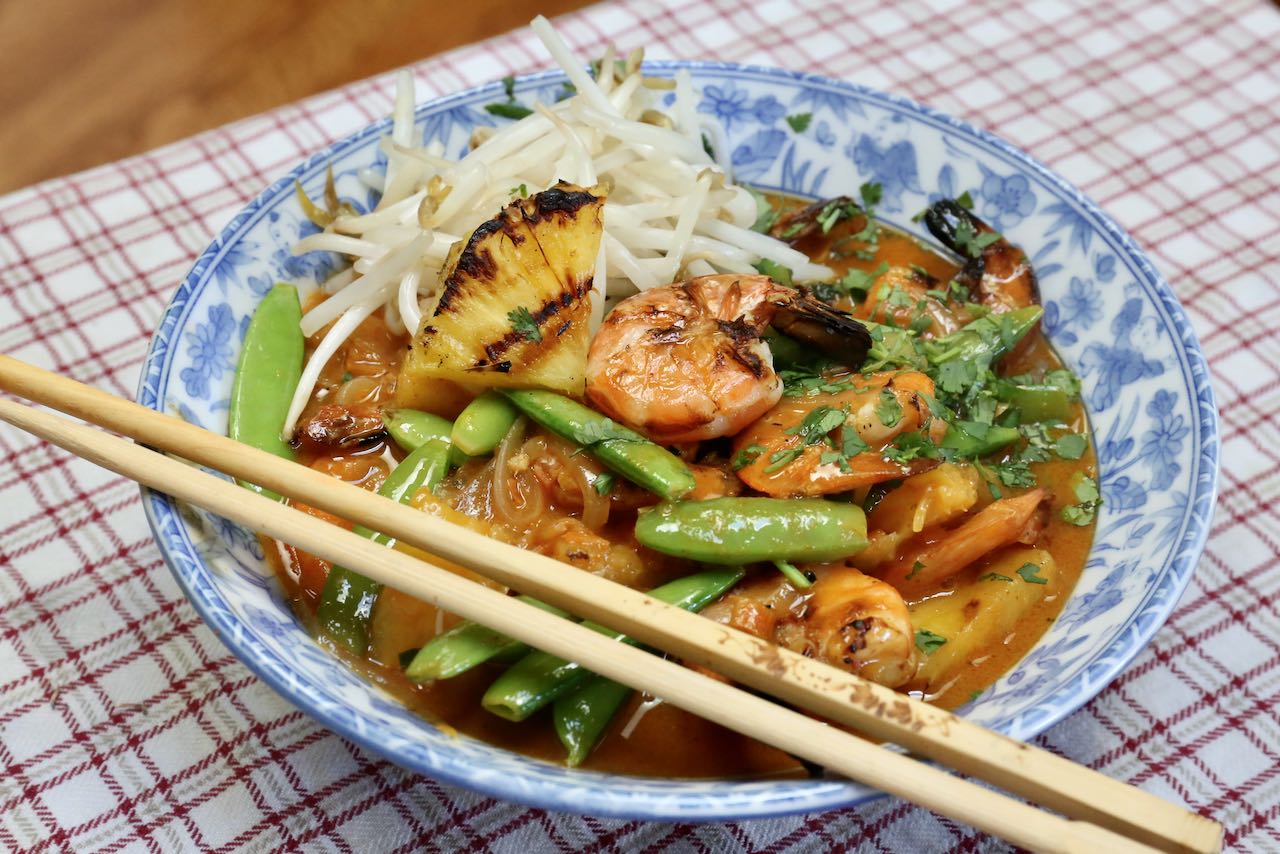


You May Also Enjoy Reading…
- How To Make Healthy Vegan Melitzanosalata Greek Eggplant Dip
- How To Make Easy Vegan Chinese Cucumber Salad
- How To Make Italian Dumplings: 3 Easy Ricotta Gnocchi Recipes
- How To Make Velveeta Cheese Dip: Best Mexican Queso Recipes
- How To Make Tartiflette Reblochon
- Garlic Boursin and Lemon Linguini with Grilled Chicken
- Creamy Mediterranean Hummus Pasta with Pesto Chicken
- Sweet and Sour Pork Meatball Recipe
- Cherry Pecan Kale Salad with Honey Lime Vinaigrette
- Peanut and Sesame Noodle Bowl with Korean BBQ Pork and Pickles
- Carrot and Tahini Salad with Crispy Cumin Chickpeas and Pistachios
- Fennel, Apple, Celery and Roasted Hazelnut Salad
- How to Make Crispy and Healthy Oven Baked Sweet Potato Fries
- Best Homemade Korean Ssamjang Chicken and Kimchi Nachos
- How to Make Kimchi at Home
- Homemade Keto Spinach Dip Recipe
- How To Make Vietnamese Crepe Bánh Xèo
- Best Homemade Pici Cacio e Pepe Pasta Recipe
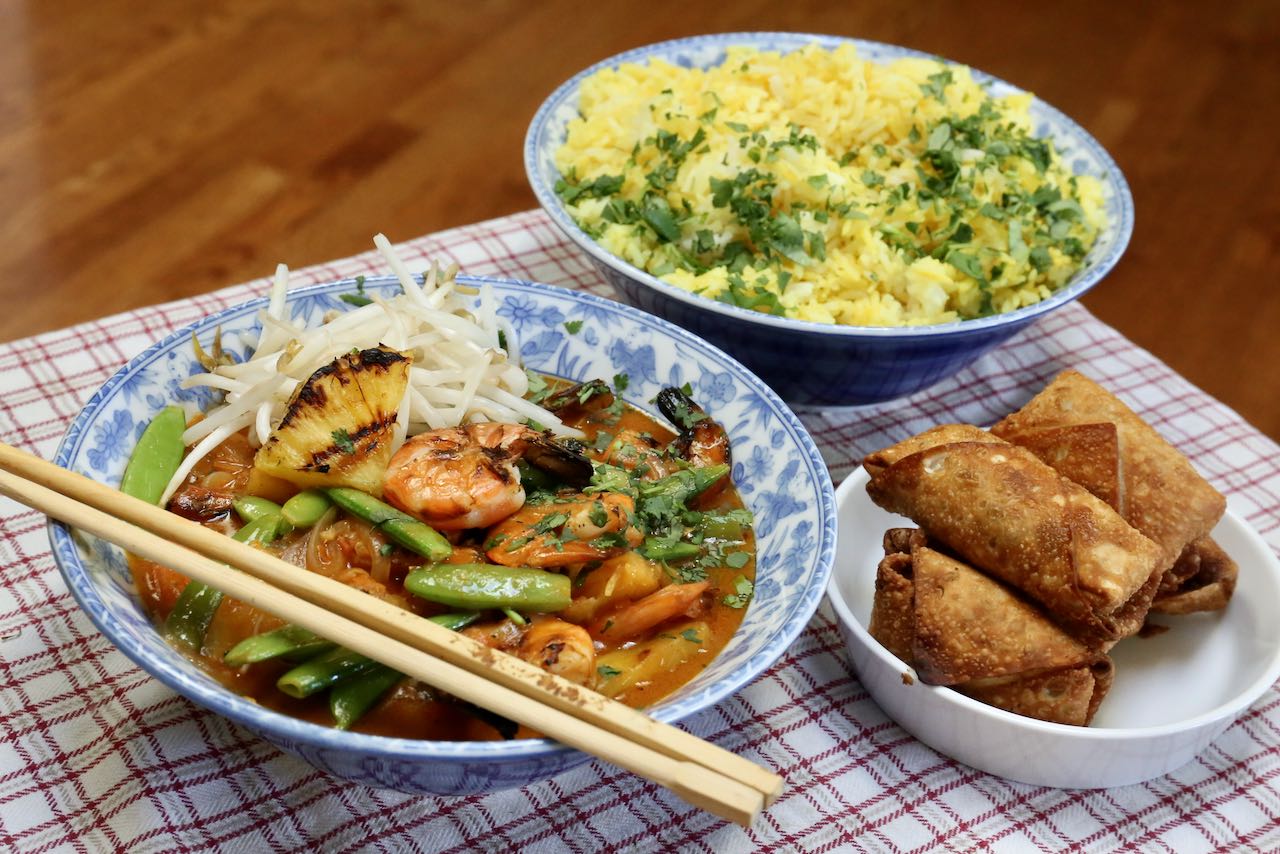
You May Also Enjoy Reading…
- Things to Do When Beach Hopping in Thailand
- Phulay Bay Ritz-Carlton Reserve in Krabi
- Amari Vogue Krabi Luxury Resort in Thailand
- Four Seasons Resort Koh Samui
- The Tongsai Bay Luxury Resort in Koh Samui
- W Koh Samui Luxury Resort in Thailand
- Amari Resort Koh Samui in Thailand
- Amari Phuket Luxury Resort in Thailand
- 10 Must Try Tastes in Thailand
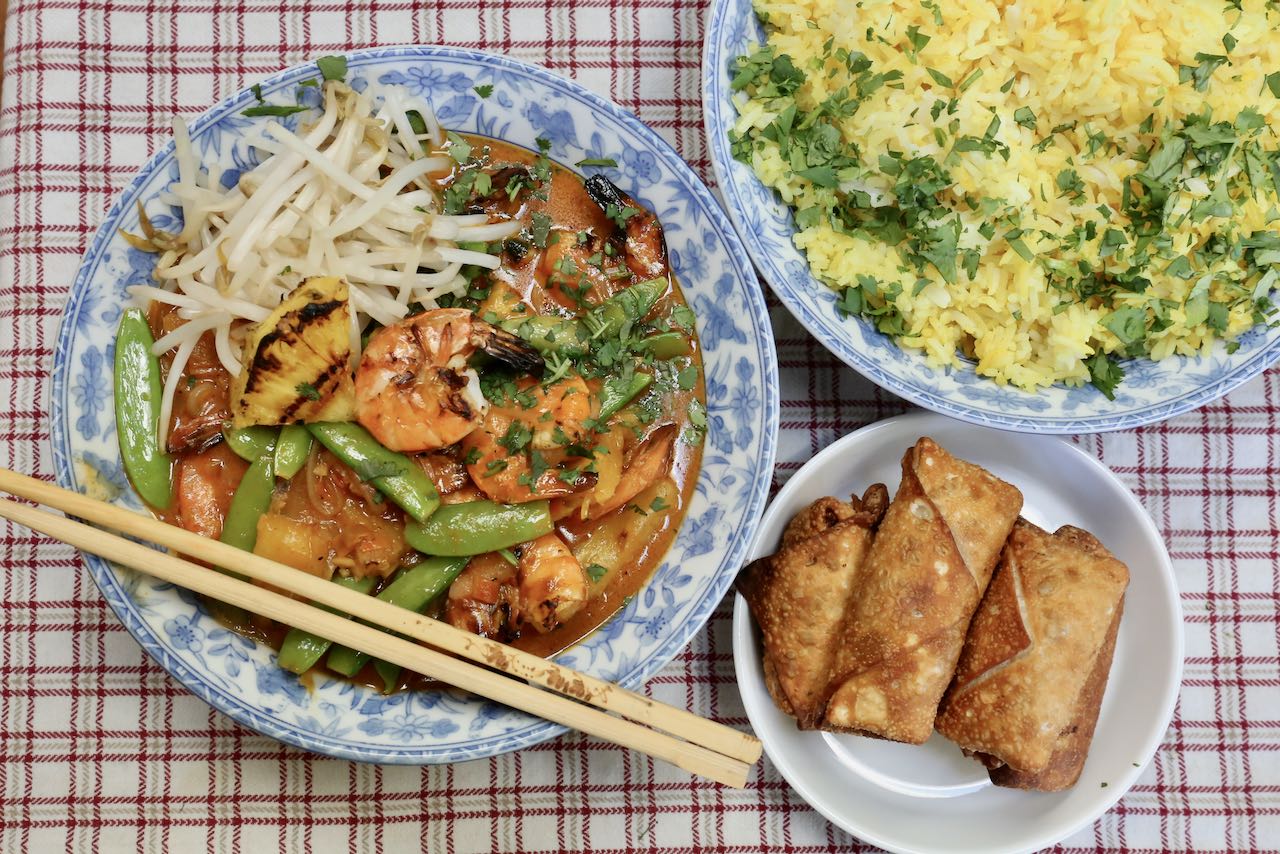
Best Barbecued Thai Red Prawn Curry
Best Thai Red Prawn Curry
Equipment
- Barbecue
- stove
- Skillet
- French knife
- measuring cups
- measuring spoons
- Wooden spoon
Ingredients
- 1 tbsp Vegetable oil
- 1/2 cup Onion thinly sliced
- 2 tbsp Ginger minced
- 2 Garlic cloves minced
- 2 tbsp Lemongrass minced
- 2 tbsp Red Curry Paste
- 2 cups Coconut Milk
- 2 tsp Brown Sugar
- 1 tbsp Fish sauce
- 1 1/2 cups Snap peas sliced in half
- 1 lb Prawns
- 1/2 Pineapple cut into thick slices
- 1 Lime juiced
- 1/4 cup Cilantro
Instructions
- Preheat barbecue while heating a non-stick skillet over medium high heat.
- Add the onion, ginger, garlic, lemongrass, and curry paste to the skillet, and sauté for 5 minutes.
- Add coconut milk, fish sauce and sugar. Bring to a boil then turn off the heat and cover the pan with a lid.
- Using long tongs, place prawns and pineapple slices on a preheated barbecue grill and sear on both sides for 3-5 minutes.
- Add barbecued shrimp and snap peas to the red curry sauce and simmer on low heat for 2-3 minutes. Slice seared grilled pineapple into bite-sized chunks and add to the curry.
- Stir in lime juice then pour prawn curry into individual bowls and top with cilantro before serving.
Nutrition
Some of the links in this story use affiliate links. This means that if you make a purchase through our site, Dobbernationloves will earn a small commission at no extra cost to you. Your support helps us to produce comprehensive content.
Save this story to Pinterest!










